 by our College Data Analytics Team
by our College Data Analytics TeamTU total enrollment is approximately 1,303 students. 413 are undergraduates and 358 are graduate students.
Male/Female Breakdown of Undergraduates
The full-time TU undergraduate population is made up of 55% women, and 45% men.
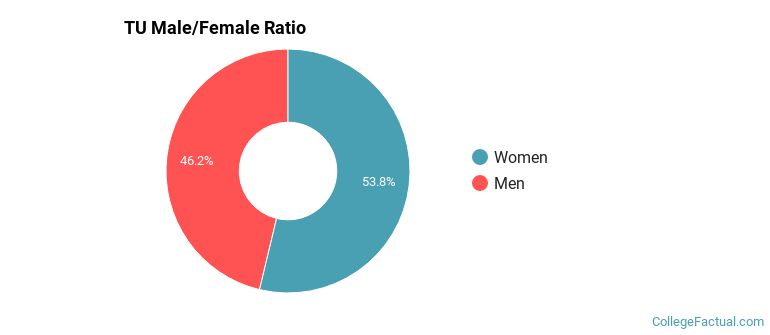
For the gender breakdown for all students, go here.
TU Racial/Ethnic Breakdown of Undergraduates

| Race/Ethnicity | Number |
|---|---|
| Unknown | 173 |
| White | 130 |
| Black or African American | 72 |
| Hispanic | 24 |
| International | 7 |
| Asian | 4 |
| Native Hawaiian or Pacific Islander | 0 |
| Multi-Ethnic | 0 |
See racial/ethnic breakdown for all students.
Male/Female Breakdown of Graduate Students
About 82% of full-time grad students are women, and 18% men.
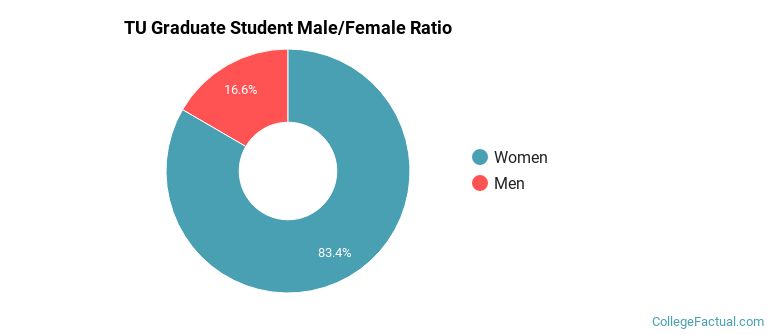
For the gender breakdown for all students, go here.
TU Racial-Ethnic Breakdown of Graduate Students
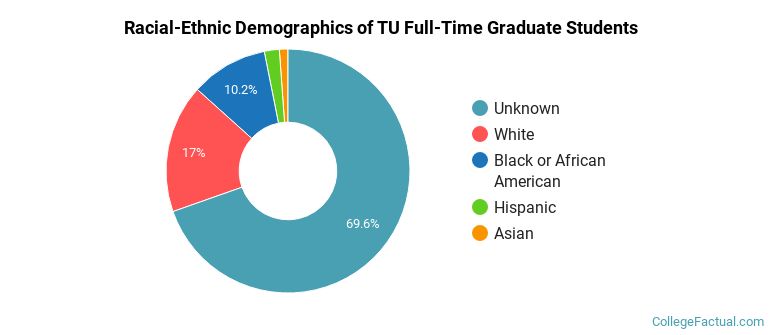
| Race/Ethnicity | Number |
|---|---|
| White | 135 |
| Black or African American | 117 |
| Unknown | 96 |
| Hispanic | 5 |
| Asian | 3 |
| International | 1 |
| Native Hawaiian or Pacific Islander | 0 |
| Multi-Ethnic | 0 |
See racial/ethnic breakdown for all students.
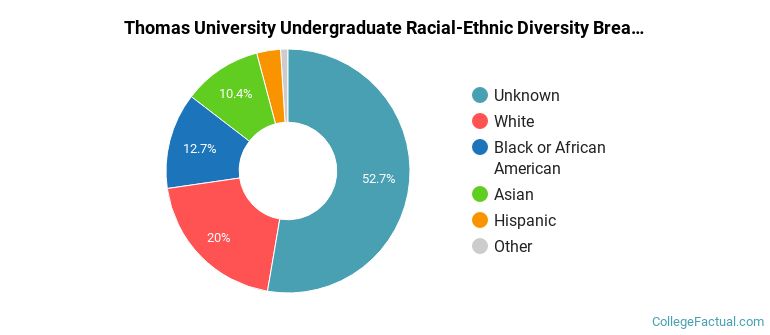
| Race/Ethnicity | Number |
|---|---|
| Unknown | 433 |
| White | 427 |
| Black or African American | 340 |
| Asian | 54 |
| Hispanic | 37 |
| International | 8 |
| Native Hawaiian or Pacific Islander | 0 |
| Multi-Ethnic | 0 |

There are approximately 915 female students and 388 male students at TU.
TU ranks 899 out of 2,183 when it comes to geographic diversity.
41.38% of TU students come from out of state, and 15.09% come from out of the country.

The undergraduate student body is split among 6 states (may include Washington D.C.). Click on the map for more detail.
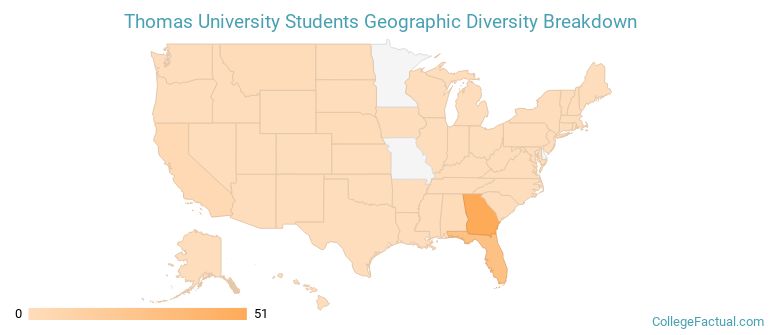
| State | Amount |
|---|---|
| Georgia | 51 |
| Florida | 29 |
| California | 4 |
| Alabama | 1 |
| Montana | 1 |
Students from 31 countries are represented at this school, with the majority of the international students coming from United Kingdom, China, and Sweden.
Learn more about international students at TU.
A traditional college student is defined as being between the ages of 18-21. At TU, 38.16% of students fall into that category, compared to the national average of 60%.
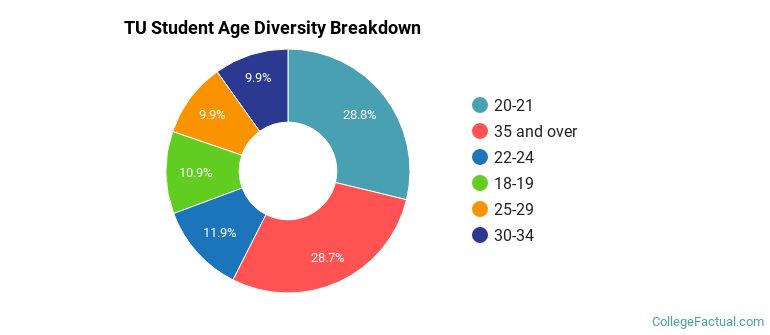
| Student Age Group | Amount |
|---|---|
| 20-21 | 443 |
| 35 and over | 441 |
| 22-24 | 183 |
| 18-19 | 168 |
| 25-29 | 152 |
| 30-34 | 152 |
| Under 18 | 0 |
Footnotes
*The racial-ethnic minorities count is calculated by taking the total number of students and subtracting white students, international students, and students whose race/ethnicity was unknown. This number is then divided by the total number of students at the school to obtain the racial-ethnic minorities percentage.
References
Department of Homeland Security Citizenship and Immigration Services
Image Credit: By AlexiusHoratius under License
Learn more about how College Factual creates their Diversity Rankings.